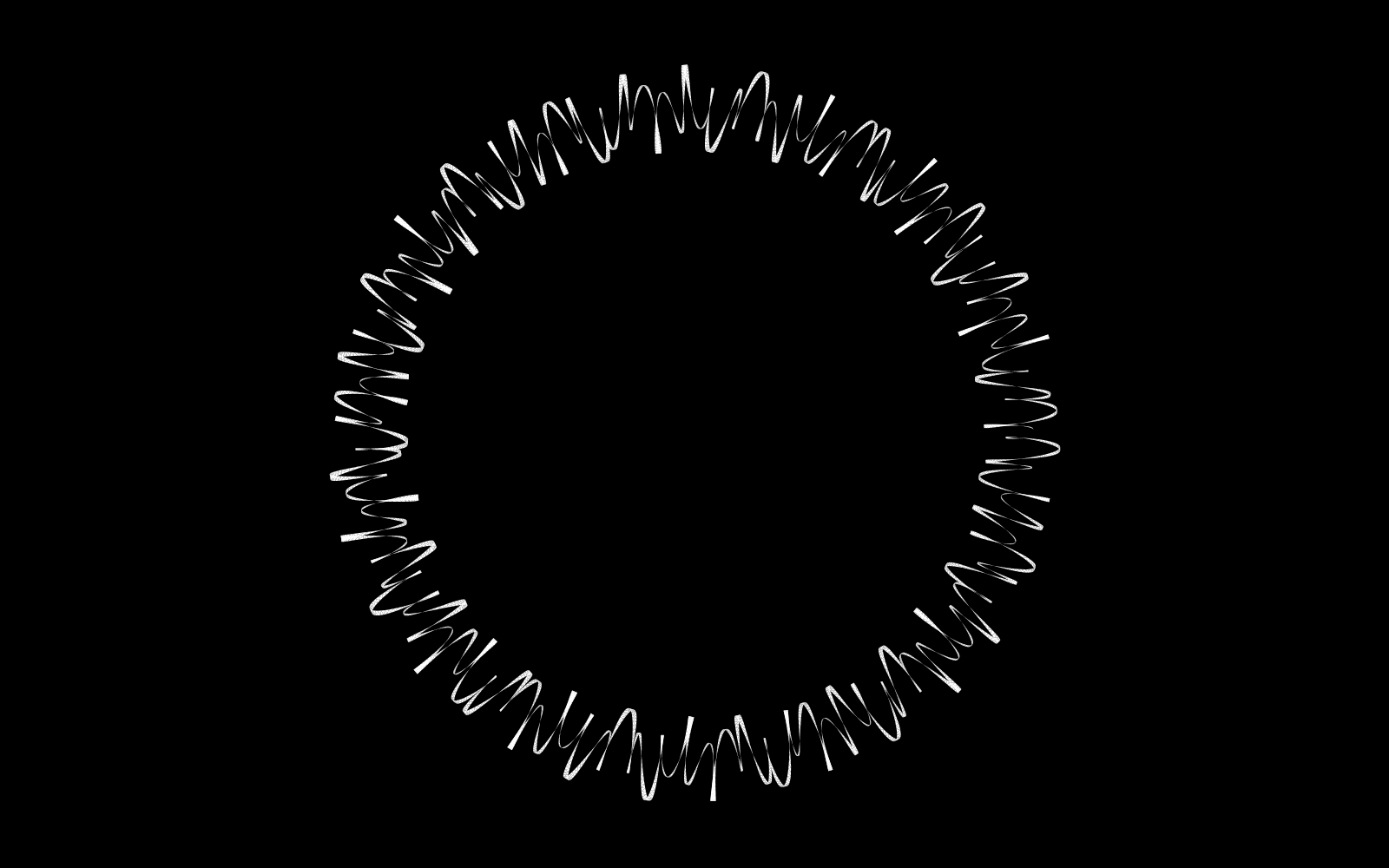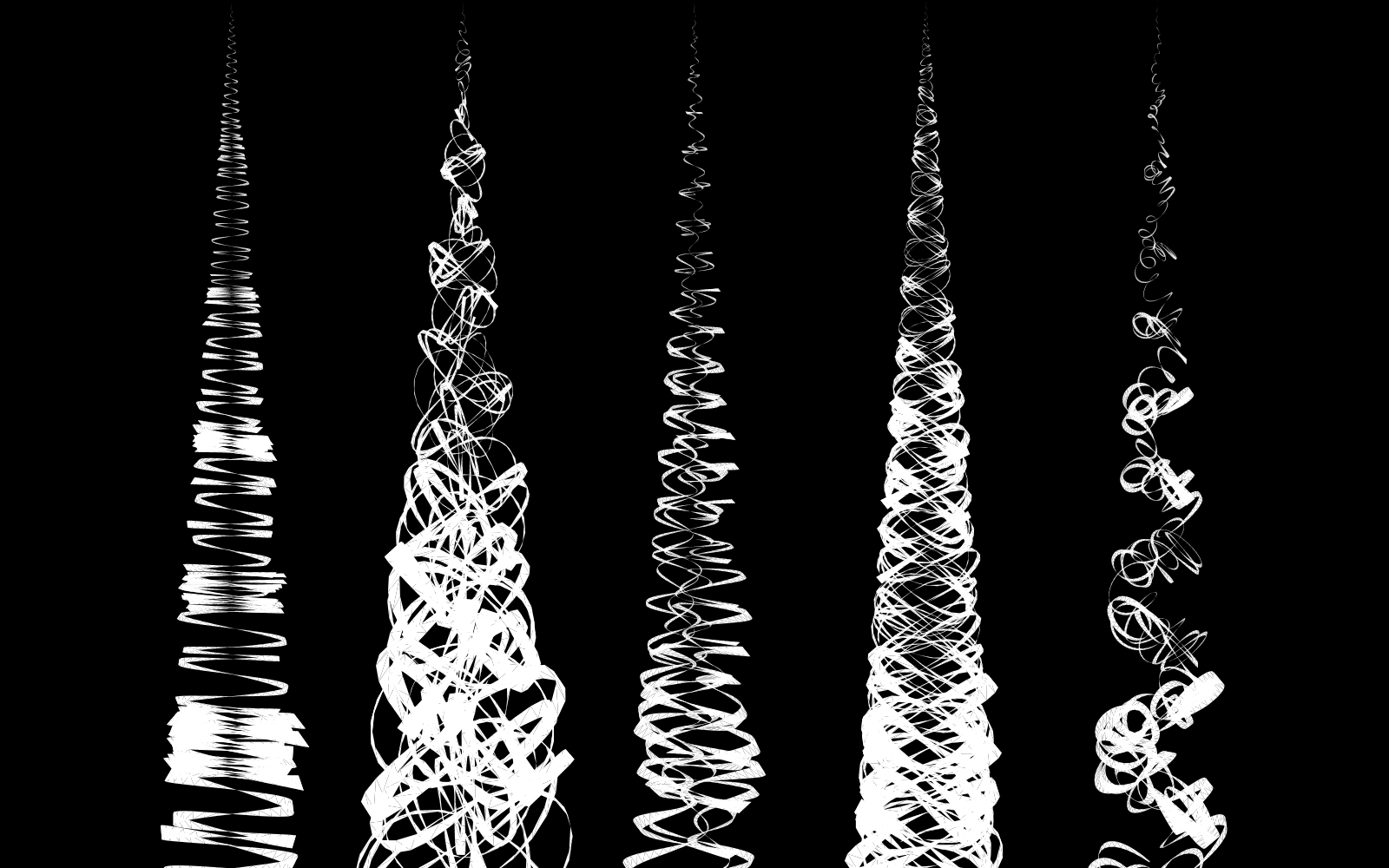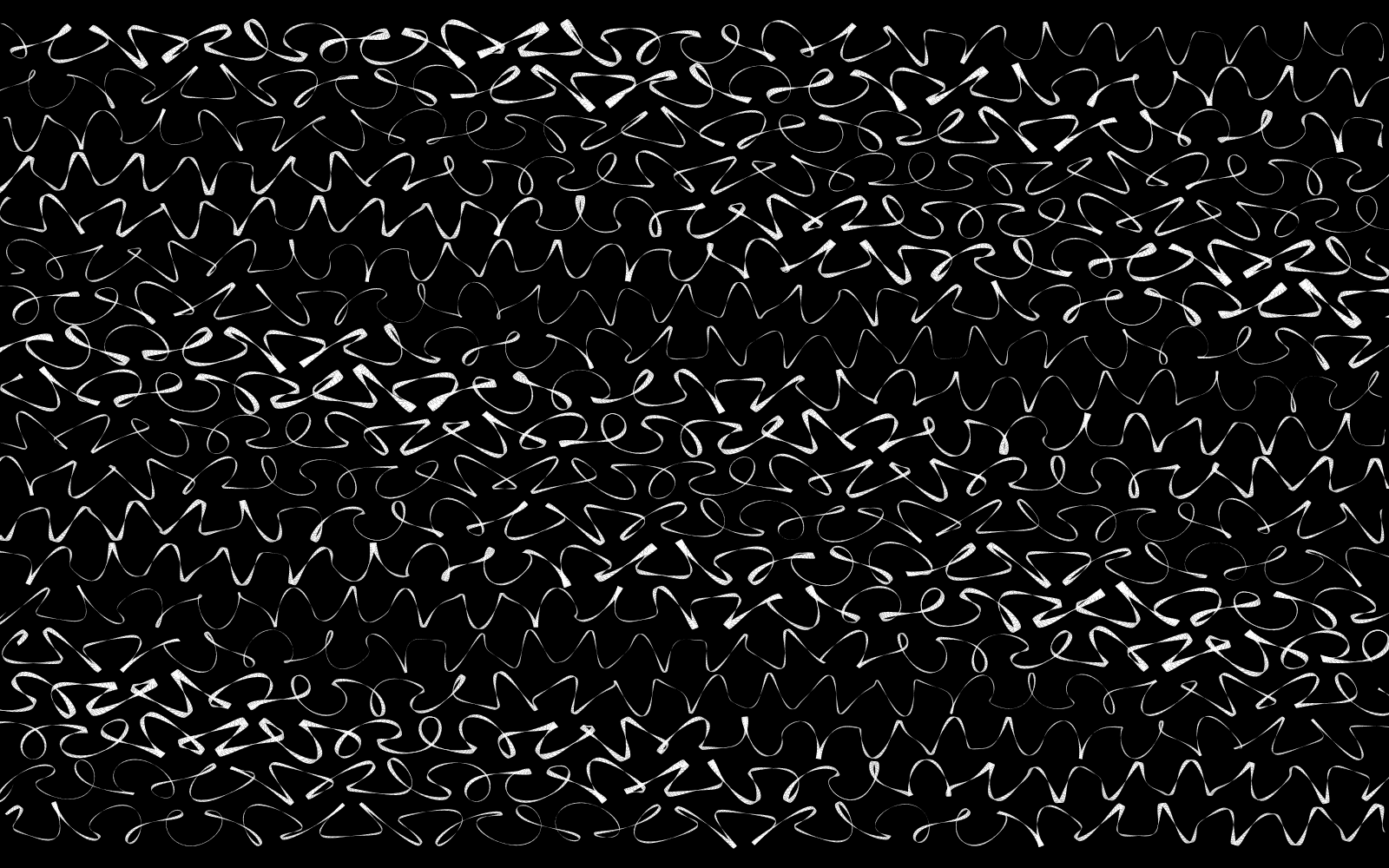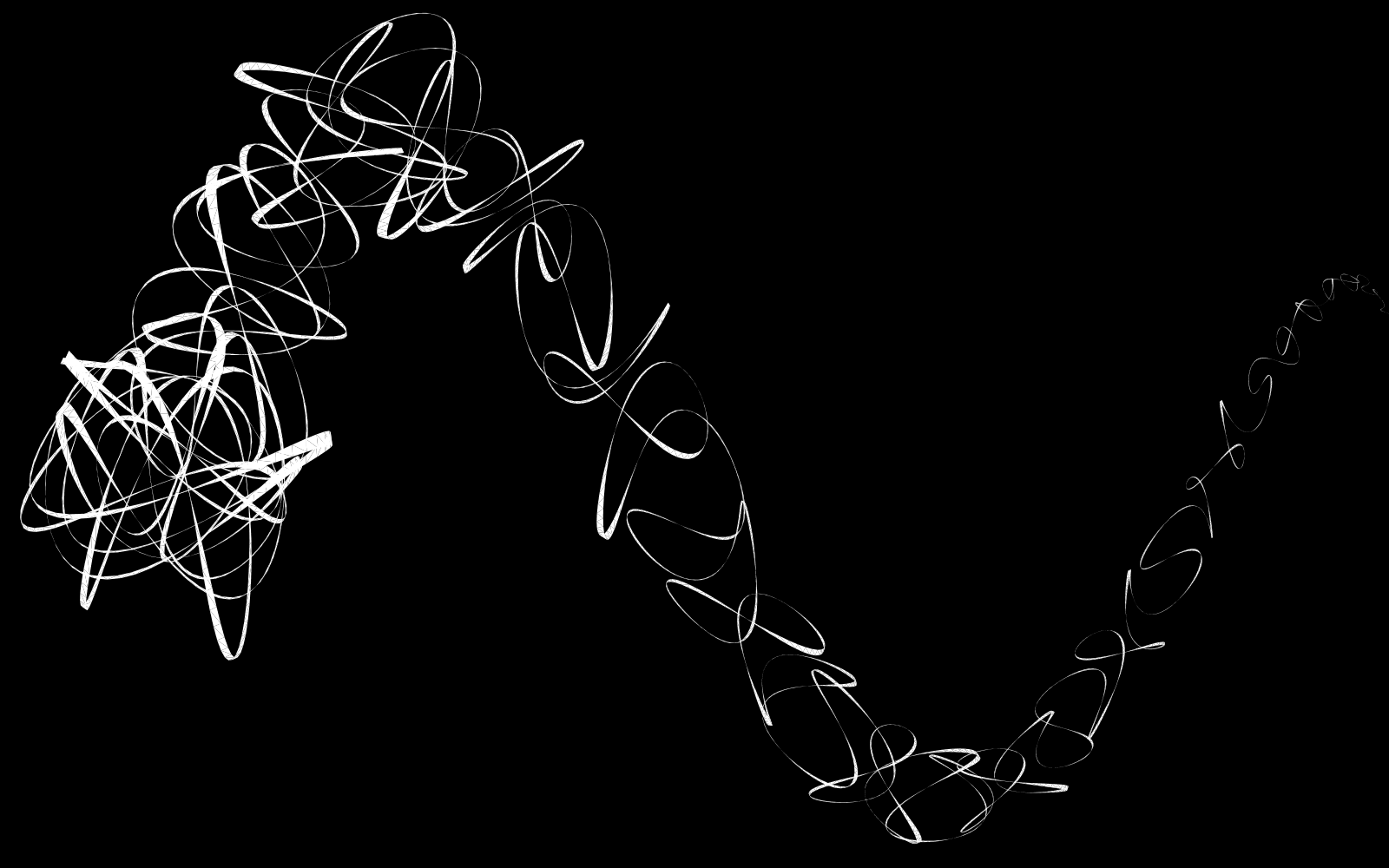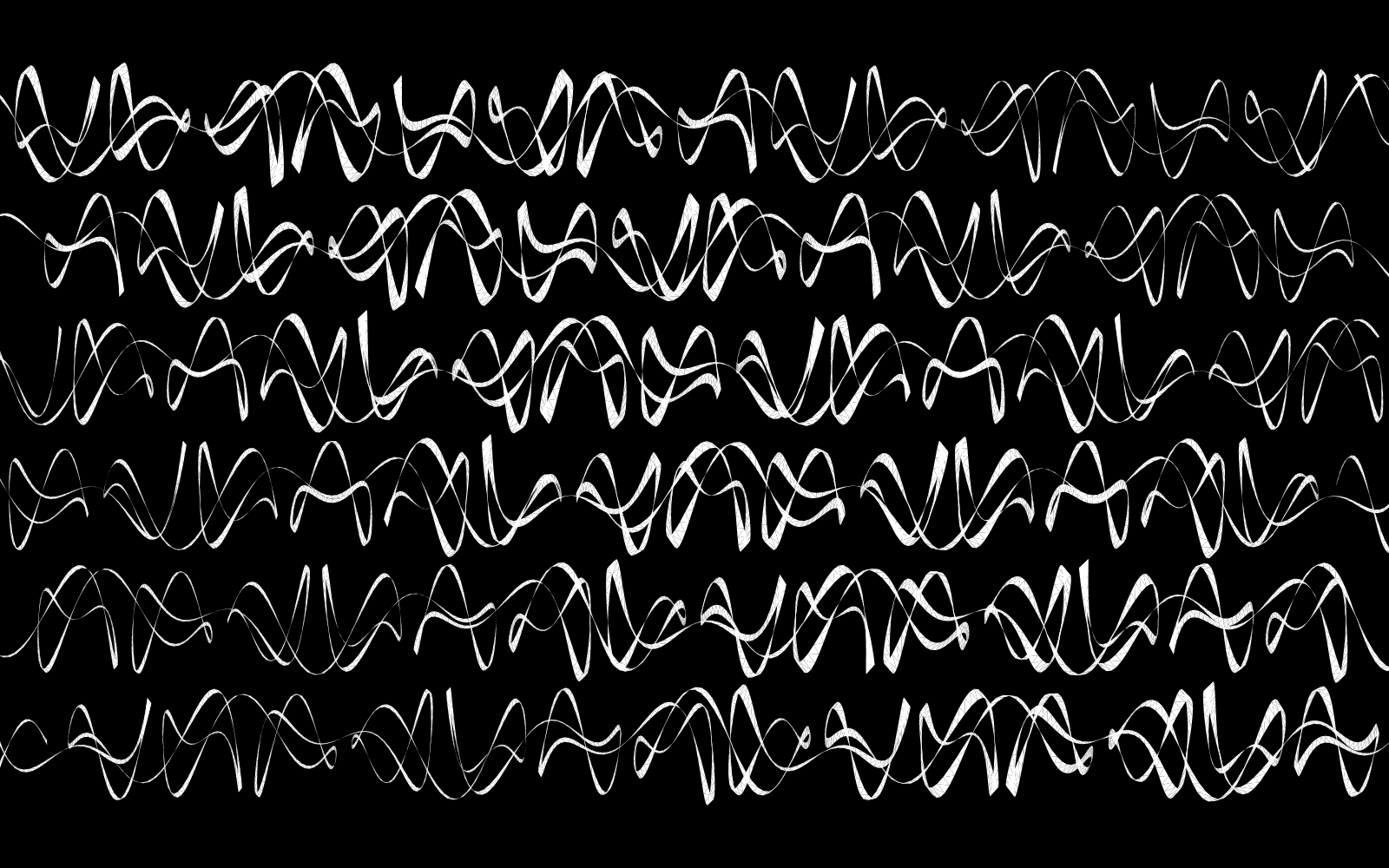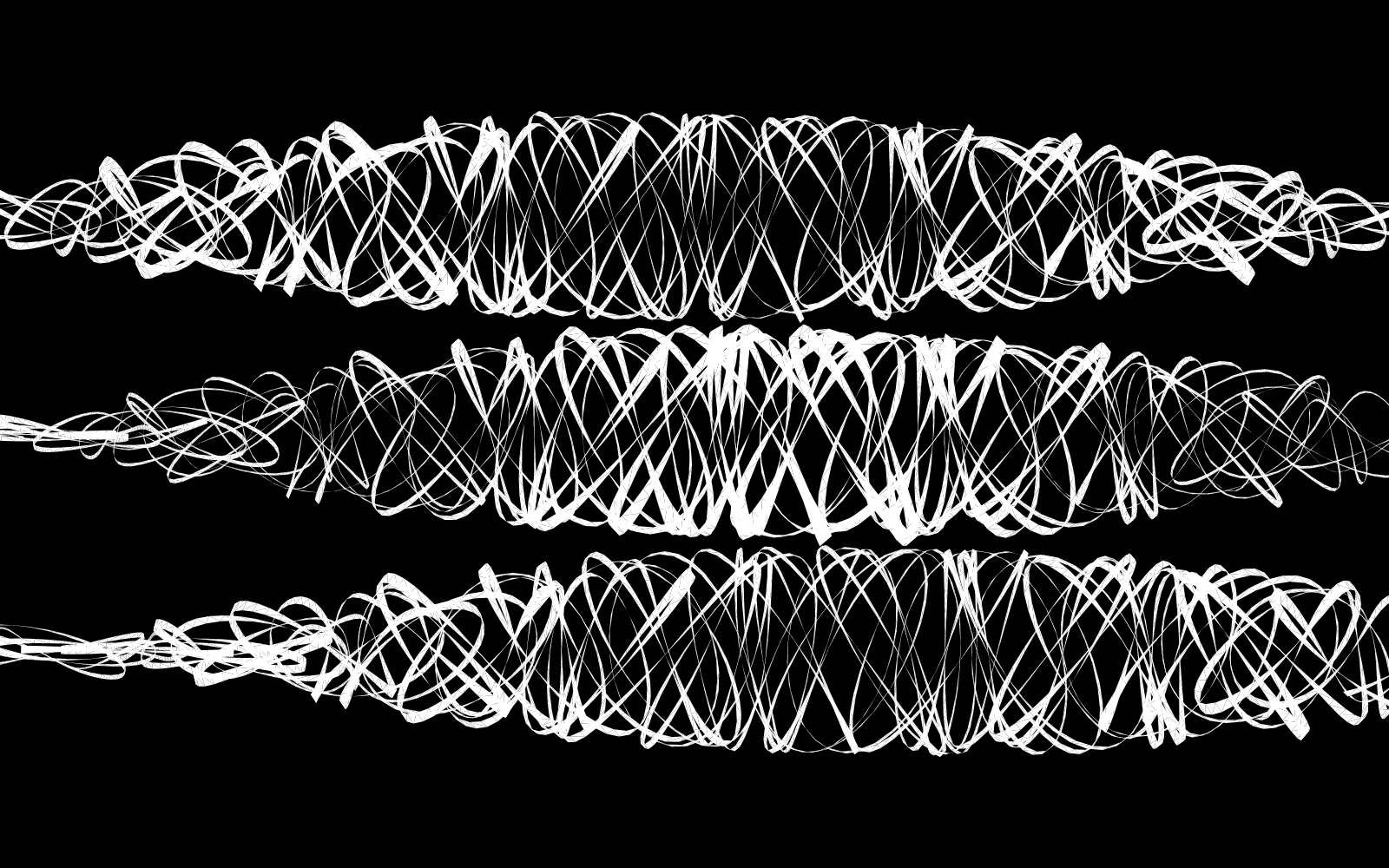Because I often ask myself “What is the signature of the artist when compared to the gesture of the machine?”, I returned to the compound sine waves I explored years ago as “harmonographs”, this time to further interrogate the question of “line” and “hand” under the rubric of pseudo writing.
In asemic writing, the style and gesture of writing becomes divorced from meaning. Examples are found in the modernist works of Cy Twombly and Henri Michaux, or in the more contemporary work of Mirtha Dermisache.
In this series, I take a more calligraphic approach which, because of my use of triangle strips to render the geometry, has something in common with the style of fraktur hand (gothic) or some variants of Arabic calligraphy. The triangle strips reproduce the effect of a flat nib (as compared to Chinese or Japanese calligraphy which uses a brush, and therefore has a very different sensibility).
The math of the waves and the graphic rendering of triangle strips, together with other specifics of the hardware and software of the machine that I use, produce the effect of the the “gesture of the machine” — a style that is in some way the authentic aesthetic signature of that technical totality, as much as it is a reflection of the hand of the artist, or their supposed authenticity.
Below is a p5*js version of one of the applications (originally programmed in java/processing). It will generate infinite random variations on the asemic writing.
writing3bFancy
- Show Instructions for key codes to control the sketch

